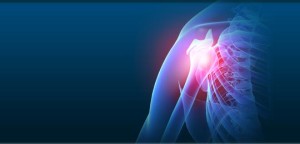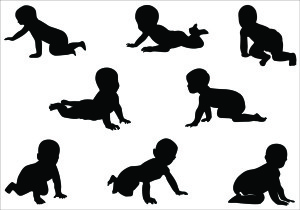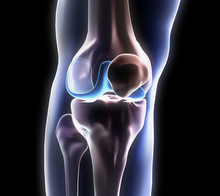Joint alignment
Everybody would agree that the main goal of any exercising should be health. If you want to lose or gain weight, health should be your main concern. So there are some of the main questions to be asked:
What exercises and what technique is the one which is healthy to your joints?
For a beginner it is hard and sometimes even impossible to know, if his/her joints are in the correct position / read healthy position. And I will write about all of this during my next posts. A child will serve us as a model in this matter. Just try to watch a child how a it is getting up from the lying position – from the side on its four, get to the squat and get up to the standing position. How it behaves when carrying toys, how it is picking them from the floor.
There is no better expert than the Nature. From children we can learn how to get up from the floor – not from the sit up how the adults do it and how you can see them doing sit ups in the gym, but we should always roll over the side of your body and through the support of your elbow and following with your hand, not to bend over with rounded back how you can see it in the gyms sometimes even with raised head, but with straight back and your pelvis thrusted backwards.
Their motoric behavior is still natural, typically human, healthy, physiological, appropriate …. In short “correct”. If we want to understand, why the joint alignment of children is the correct one, we also have to think about what is good for human joint meaning biologic specie.
We can search for the answer in evolution during which the joints were adapting to a specific form of overload.
Evolution of joints?
Our ancestor – vertebrates – lived in the water something about half of a billion years ago when they got to the surface (about 250 billion years ago), they changed their appearance and bone structure. For example shoulder-blades originated from the lower jaw from the location where selachians had the joints for flippers. We can say actually that at that point we started to use so called “crossed locomotion of the body”. Of course we have inherited also some characteristics from the age of primates after we finally started to walk on two two legs (1 million years ago). We still carry the history of vertebrates with us.
We can speak about the process of the shoulder adaptation from the age when it used to be a locomotion joint namely during scrambling or during climbing on the tree until today, when it became a multifunctional joint. Because there always stays something in our joints from this period of time we ask: What and how can we use it during the selection of exercises and training.
However, we should be careful about this, because today´s man evolved during the last tens of thousands years in the different way from his ancestors. So we return to the hand-hold, not to the exact same longtime ago which was adapted to the position of clavicle joint, but to the human hold. That is why the therapeutic crawling (Klappov) is so beneficial. It takes into consideration the human high prone falling kneeling. Also the exercises in the hanging position and its modification can offer one of the possibilities for the shoulder joint how to strengthen in the correct way, but again we have to search for the human modifications of the hanging position.
One can say the evolution of species is repeated by every individual. So we can only guess the positioning of joints of our “before-human “ancestors, however as a example for joint alignment should serve us our human descent. We can observe by a healthy toddle the positions of joint in its age of about 3 months, we consider this as a exemplary joint configuration. We speak about three-months, half-year, year or three-year model of joint setting.
A new-born child is an example of unsuitable joint setting. Thus we do not exercise with inner-rotation of shoulders, shoulder-blades off the ribcage, head bent backwards and chin forward, in the inner rotation of hips, with hyper lordosis or hyperkyphosis of the spine and other unsuitable configurations.
As the best suitable model for the joint setting serves us the three-month new born child. Why? Because at this age there happens the stabilization of the lumbar spine due to the nitro ventral pressure. Here begins the cooperation of the muscles on the abdomen and back wall, stability cooperation of the antagonists (co-activation of ventral and dorsal muscles). In the following development comes into action the cooperation of the antagonists placed sideways. This will provide diagonal stabilization (5 months and older models).
Joints
From the physical point of view, joints serve us as slippery bearing. If you want to ensure there will be caused the least damage of the contact surface, you have to make sure the applied forces are spread out on as bigger surface as possible. That is why our bones have the extensive endings on the joint land. If you won’t use them fully and overload only part of them during exercises as well as during daily living, we damage our joints. In order to keep the joint healthy and functioning properly you need to make sure that the acting forces are acting right in the middle of the prompt curvature that means into the center. We call this “joint is in the centralized setting”. That means there are no other forces acting on the joint structure which are pushing the joint out of the socket. What more when joints are in the correct position muscles have the most favorable conditions for their function. Muscles which are causing the movement are working better as well as the muscles responsible for stabilization. So called “function centralization” is causing exemplary joint setting, this corresponds to our human fundamentals and I will go through this in the upcoming topics.
Ready for this?



